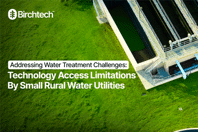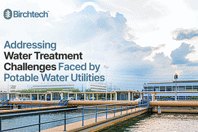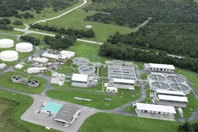CONTAMINANT REMOVAL RESOURCES
-
Drinking water systems across America face a mounting PFAS threat with starkly different capacities to respond. Large urban utilities typically have ample resources to detect and remove these persistent chemicals from water supplies, while small rural systems operate with tight budgets, skeleton crews, and minimal technical support.
-
It is critical to understand the limitations of permanent installations and how a temporary water treatment system can make sound logistical and financial sense.
-
Among other contaminant concerns, drinking water managers in the Golden State are being held to tighter standards on chromium.
-
Both rural and urban water systems experience dissolved organic carbon (DOC) — a precursor to halogenated organic compounds like total trihalomethanes (TTHMs) and haloacetic acids (HAA5) — in source water. However, rural systems often struggle to find treatment options suited for smaller scale operations and budgets.
-
How are fine screen solutions aiding winemakers in their efforts to meet California State Water Resources Control Board mandates for enhanced monitoring and treatment of winery process water.
-
Addressing Water Treatment Challenges: Technology Access Limitations By Small, Rural Water Utilities
With aging infrastructures, lean and limited personnel, lower budgets, and less accessible, often remote locations, smaller and rural water treatment plants are challenged in maintaining operations while understanding new and important technologies in improving contaminant removal in water treatment.
-
“Emerging Contaminants" can be broadly defined as any synthetic or naturally occurring chemical that is not commonly monitored in the environment. These substances have the potential to enter the environment and cause known or suspected adverse ecological and/or human health effects.
-
The U.S. PFAS water and wastewater treatment equipment market is expected to grow at over 11% from 2024 to 2031, primarily driven by stringent regulatory requirements and enhanced public awareness of PFAS contamination risks. The market was estimated at over $90 million in 2024.
-
Founded in 1982, Peace River Manasota Regional Water Supply Authority supplies drinking water to a region of approximately one million people living south of Tampa Bay in DeSoto, Charlotte, Sarasota and Manatee Counties. Its surface water treatment plant draws water from the Peace River to a reservoir and treats it to drinking water standards at the rate of about 31 million gallons a day.
-
This document outlines the essential steps required to exchange spent media, including disposal of spent media.











